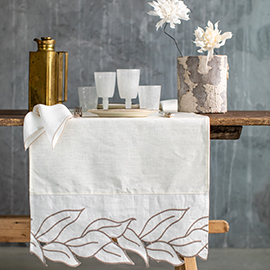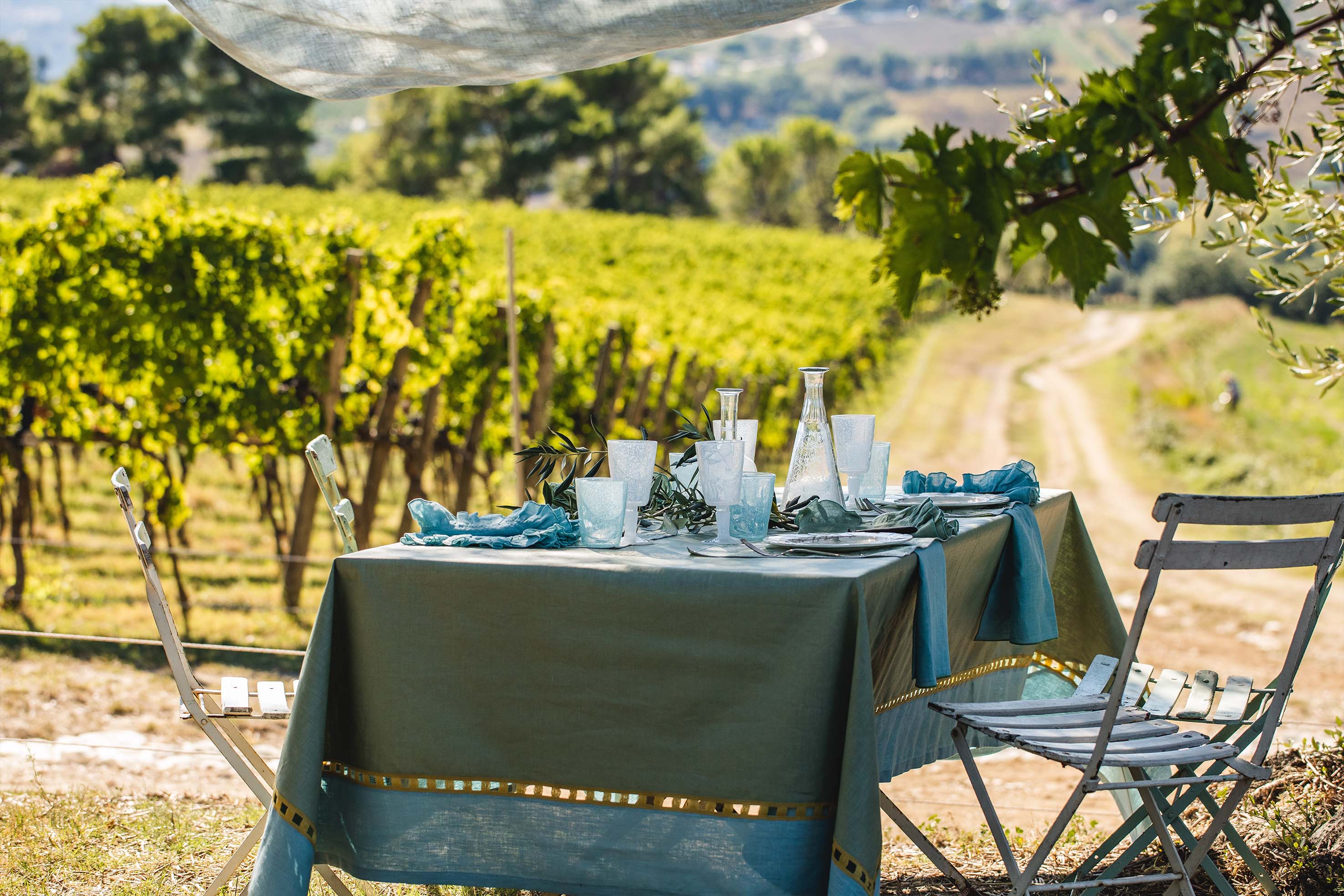
I think it has happened to everyone to pull a beautiful tablecloth out of the cupboard for a dinner or lunch with friends and then to change your mind, thinking about the work to be done to stain, wash and iron it. Very often we give up setting a nice table precisely because of the boredom of washing or not to risk irreparably ruining a tablecloth we particularly care about.
This is really a pity, because that of a well-groomed table is among the pleasures we should never give up. To simplify life and solve this problem, stain-resistant tablecloths are available on the market. They offer great ease of maintenance, often combined with refined aesthetic taste. In the case of our tablecloths, for example, we have chosen to use the most beautiful fabrics, pure linen or pure cotton, with prints, stripes or delicate exclusive colours, and to make them completely stain-resistant thanks to a specific treatment that maintains their elegant appearance but allows them to be easily cleaned by wiping them with a damp sponge.
But what is meant by a stain-resistant tablecloth?
People often confuse the concept of waterproof fabrics with the more complex concept of resin- and stain-proofing, which are two different things. There are fabrics on the market with various types of waterproofing treatments, such as those based on Teflon, a material with which water-repellent fabrics are treated that makes water on the surface but does not protect them from stains.
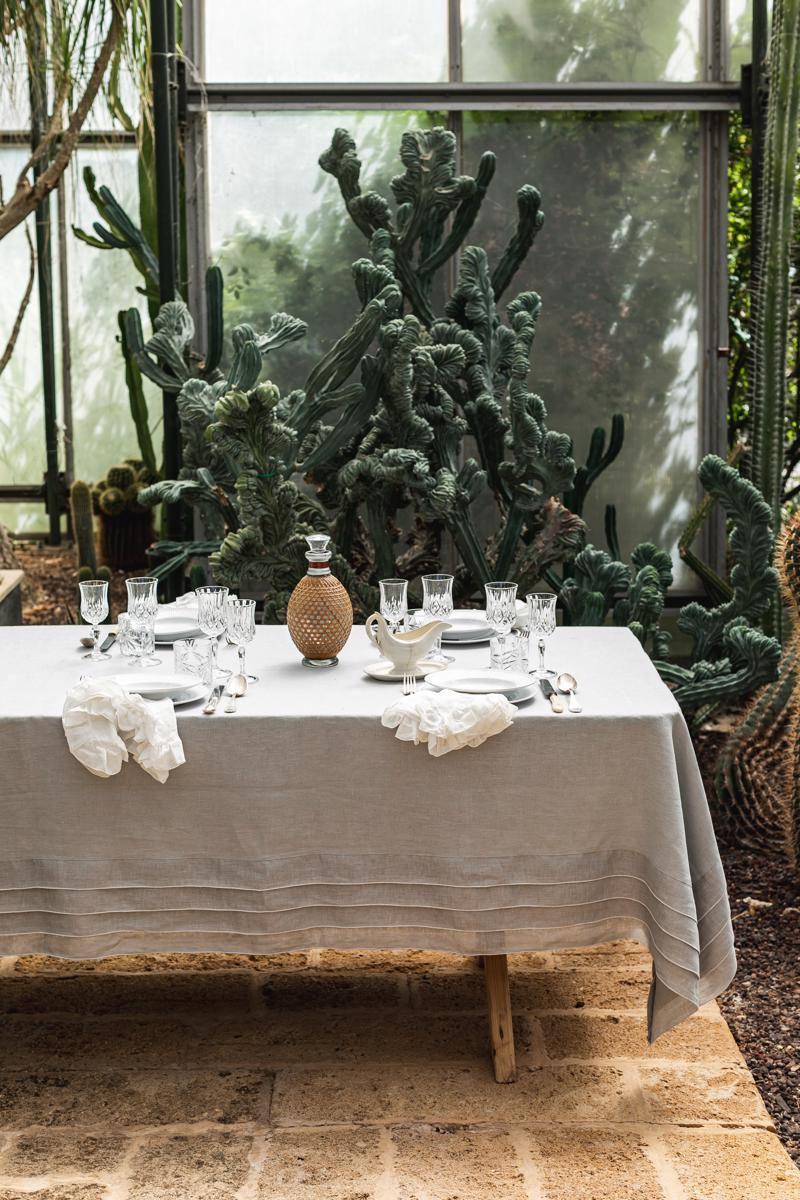 |
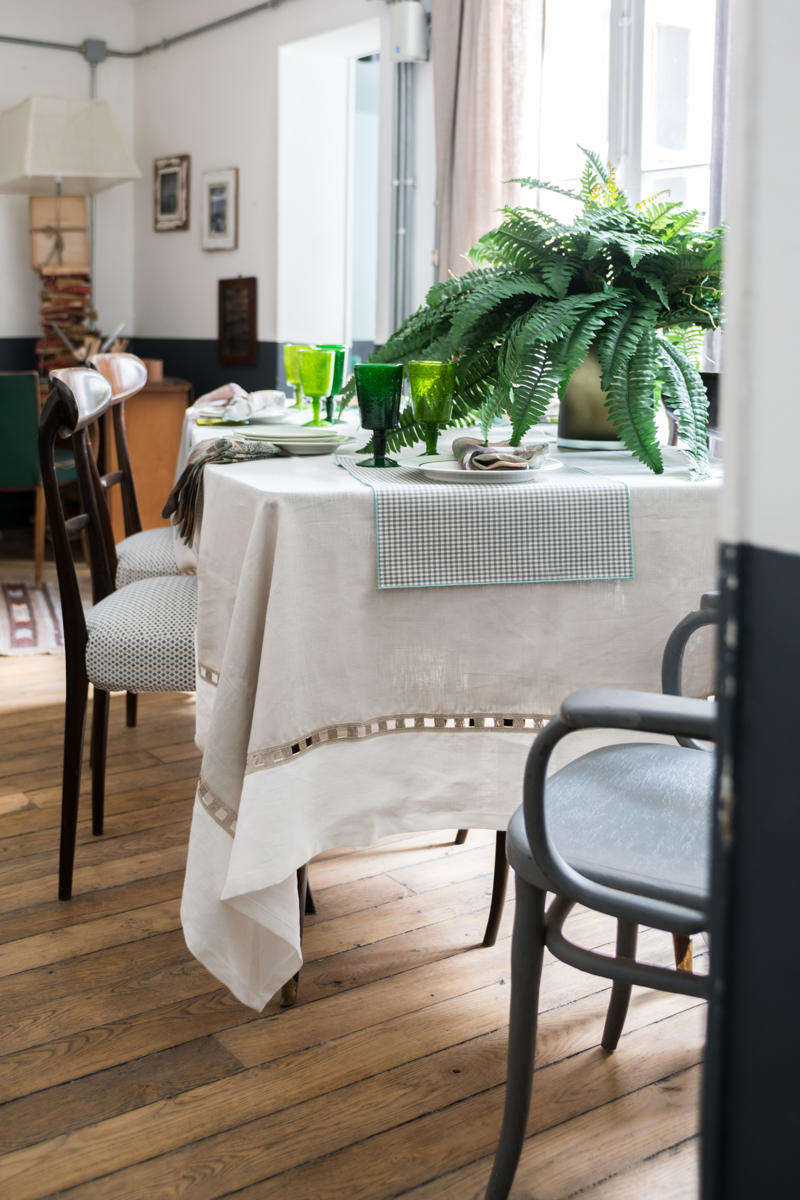 |
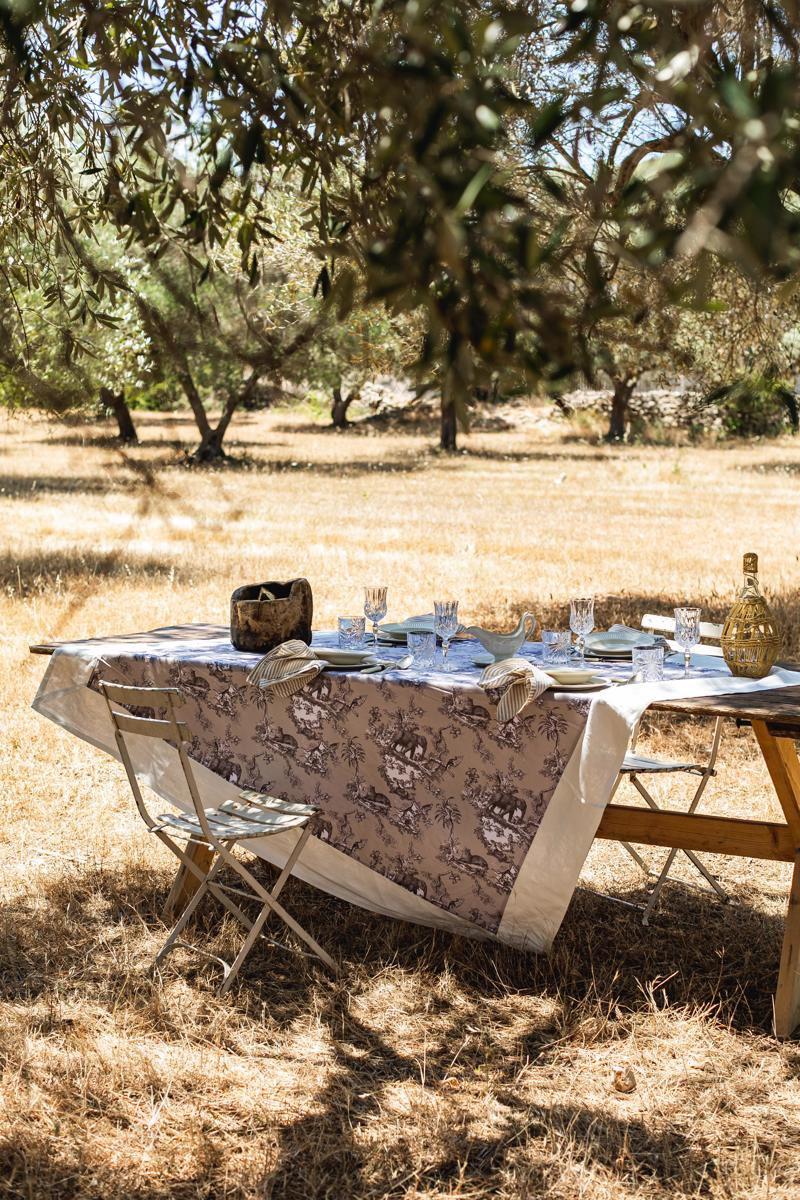 |
As we all know, at the table the most frightening stains are certainly not those of oil, tomato, fruit and coffee stains, right up to the dreaded red wine stains, which a stain-resistant tablecloth must resist: my advice is therefore to prefer them to simple water-repellent tablecloths. Knowing well the difficulties in handling embroidered linen tablecloths we have developed, in collaboration with a professional chemist, a treatment that would preserve the beauty of the fabrics and make them resistant to all accidents at the table, not just water.
Thanks to the resin and stain-resistant treatments, the tablecloth with an ordinary damp sponge, avoiding difficult stains and greatly reducing machine washing and ironing. machine washing and ironing, all while keeping the fabric soft and elegant, suitable for even the most demanding table settings.
What are stain-resistant fabrics?
The stain-resistant fabrics generally on the market can be cotton, linen-blend plain or patterned. However, one will hardly find fabrics of noble fibres such as pure linen, because one is inclined to think that since there is a surface treatment, it is not worth worth using very expensive fabrics as a base. We have made a different choice, selecting for the anti-stain range over thirty plain colours and many patterns in pure linen or cotton. The collections are enriched each season with new colours and also include striped fabrics, floral prints or a wide range of motifs inspired Toile de Jouy.
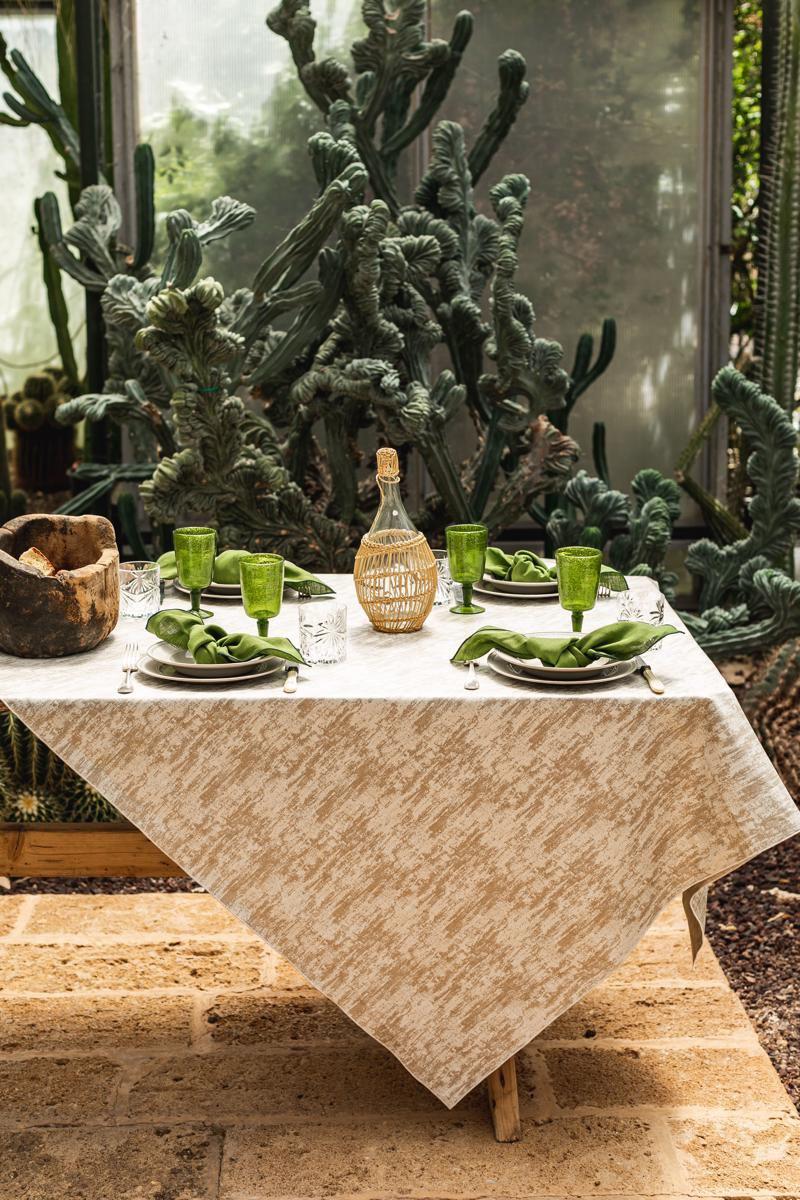 |
 |
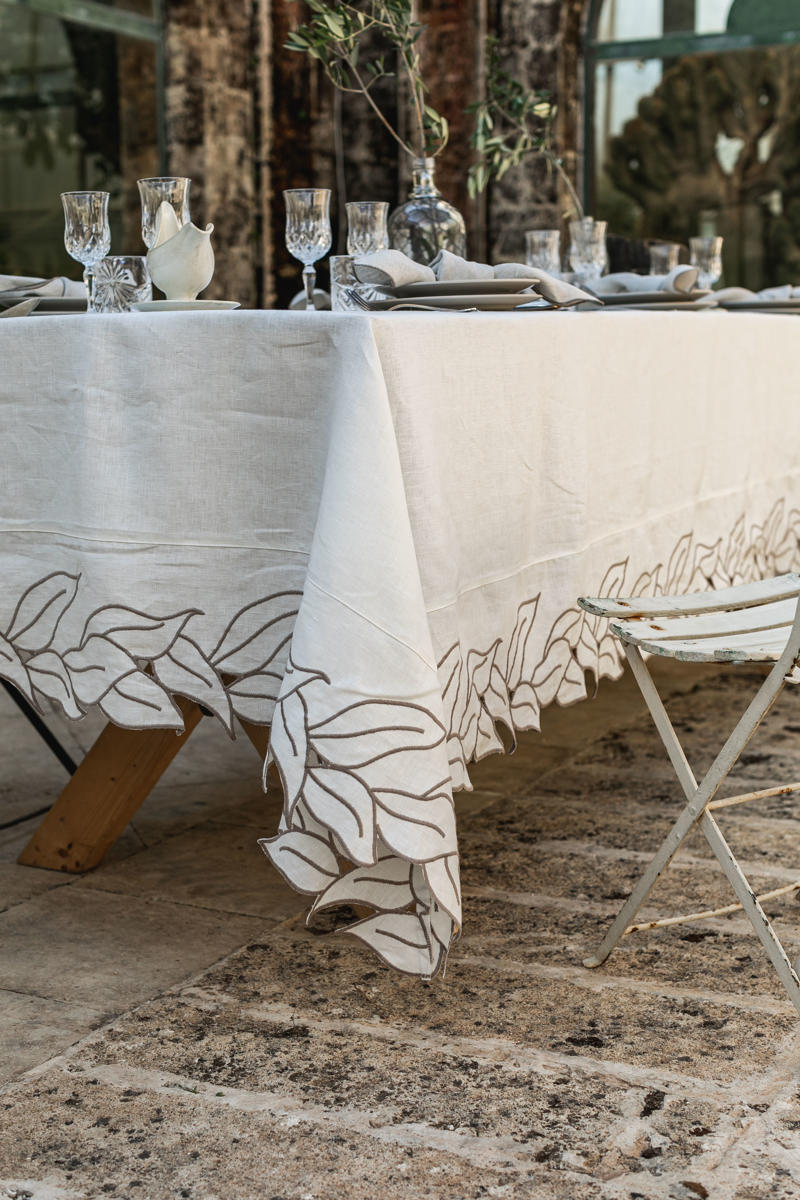 |
As far as finishes are concerned, our aim is to dispel the myth that a practical tablecloth cannot be elegant. On the contrary, it is our special treatment that allows us to apply borders such as the ruffles or frills of the Gitane line, which would frighten the most daring if done on tablecloths that have to be washed and ironed after each use! Each tablecloth comes with different borders and finishes and in many standard sizes as well as with an accurate made-to-measure service resulting in a range of several thousand of fabrics and sizes to create what I consider to be a truly haute couture garment for the table. fashion for the table.
How do you clean a stain-resistant tablecloth?
In general, a water-repellent treatment enables a fabric to be buffered at the very moment a liquid is spilled on it, such as when spilling a glass of wine. The fabric tends not to absorb the liquid and it will be natural to dab it up with a simple kitchen towel or paper towel: a normal water-repellent treatment, simply pressing a finger on the drop of water will allow it to penetrate and impregnate the fibres. A good anti-stain treatment, on the other hand, creates a real barrier and allows you to take immediate action on the stain, preventing it from penetrating into the fibres immediately on the stain, preventing dirt from penetrating the fabric. Not only that, but it will react in the same way with both water- and oil- or acid-based agents, even resisting by pressing on the stain, as in the case of a drop of wine pressed under a bottle.
How to prevent stains from being absorbed by the fabric?
A tablecloth allows stains to be cleaned before they are absorbed by the fabric, acting promptly. What is important is not to leave stains for hours on the tablecloth before cleaning them, just remove them, even if only with a sheet of kitchen paper or a damp sponge. My advice is always to clear the table after every meal and carefully wipe the entire table surface with a cloth. surface of the table with a damp cloth or very little neutral soap, to prevent even the even the smallest stain from being absorbed by capillarity by the fabrics.
How to wash a stain-resistant tablecloth?
Obviously this does not mean that a stain-resistant tablecloth should not be machine washed, even if less frequently than traditional untreated tablecloths: we choose a delicate wash, which we do with the aim of refreshing the fabrics. Occasionally, in fact, the tablecloth can be washed by hand or in the washing machine at a moderate temperature of 30° or 40° at the most, with neutral soap, choosing a cycle for delicate garments that avoids too strong spinning.
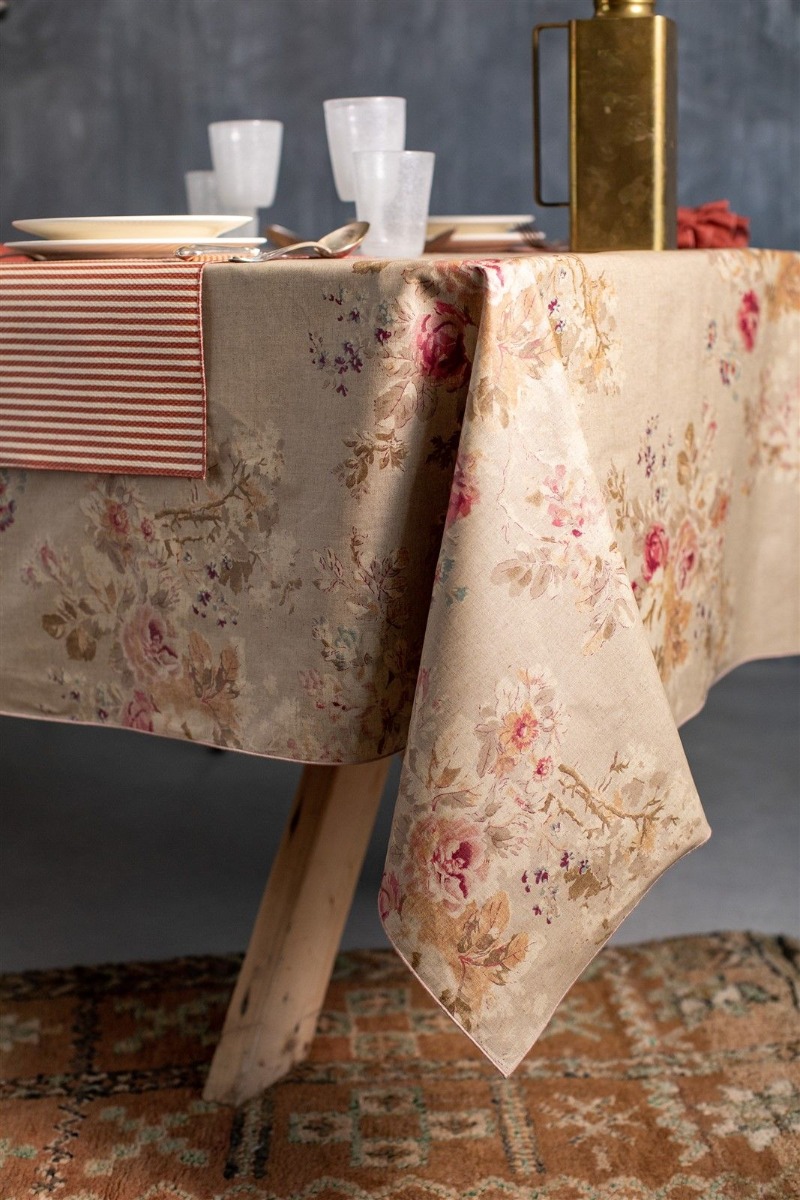 |
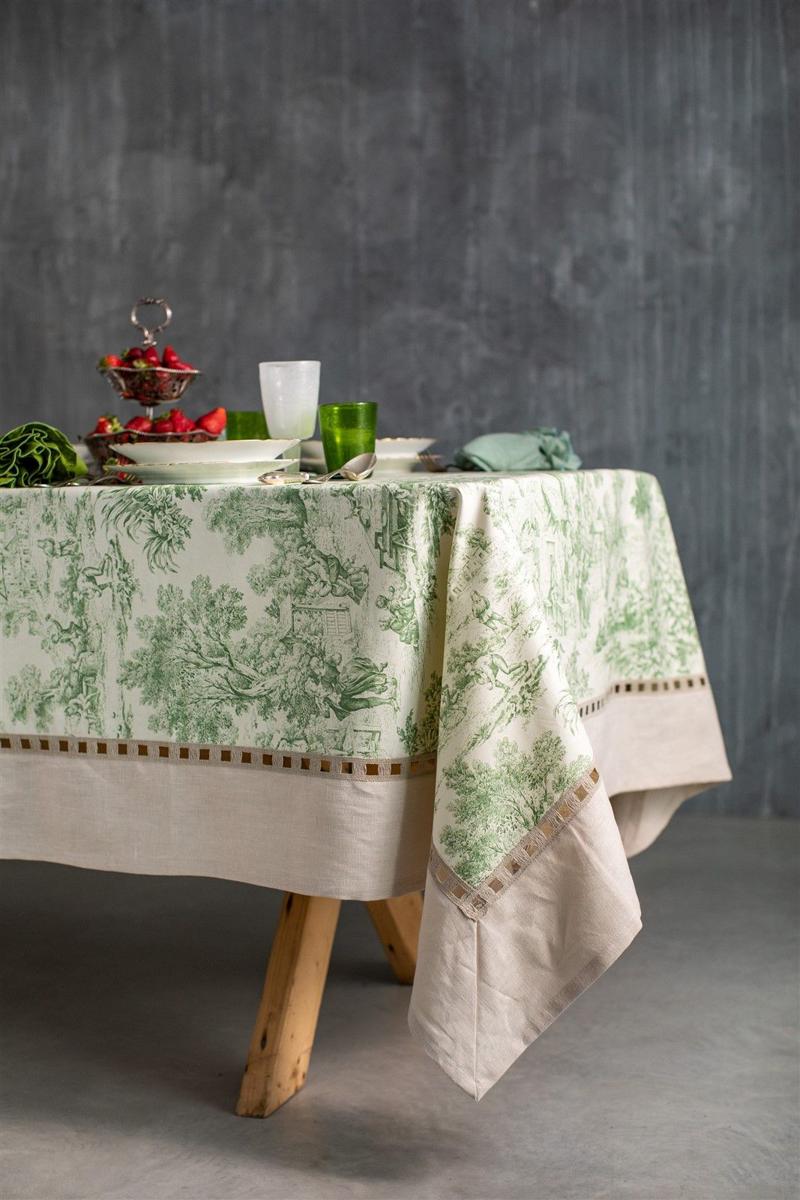 |
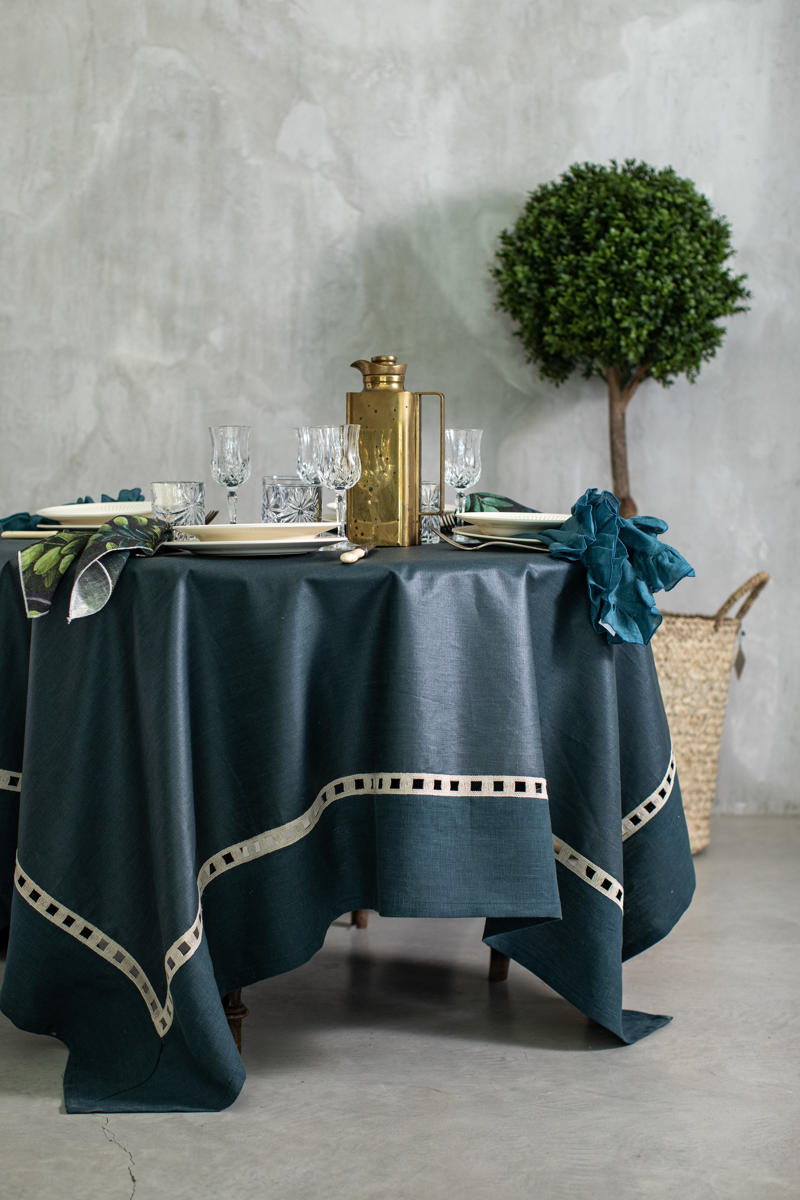 |
How to iron a stain-resistant tablecloth?
When it comes to important tablecloths, one of the first thoughts is that of ironing: we are talking about large sizes for large tables, perhaps, or complex because they are enriched with flounces and embroideries. Thanks to the practicality that such a tablecloth offers, one can dare more and also choose more demanding sizes and finishes. As for the stain-resistant tablecloths commonly on the market, ironing depends on the composition of the base fabric; if it contains polyester, for example, you must be careful to use only a lukewarm iron. The most important recommendation is not to iron the stain-resistant treatment directly but to always work only on the reverse side, with a very hot iron and using the steam jet, of which the resin treatment is a good ally, because it helps to trap the heat and stretch the fibres. The important thing is to iron it only and on the wrong side of the tablecloth, so as not to ruin the anti-stain treatment on the straight side. straight side of the tablecloth.
Which napkins to match the stain-resistant tablecloths
If you have ever wondered what fabric napkins are made of to match a tablecloth napkins are never stain-resistant, this is because, if they did not absorb, they would lose their essential function, which is precisely to cleaning. The rule I follow to match them, and which you can make your own, is to start from the tones of the tablecloth you buy: in the case of ours, which often have contrasting coloured borders, I take my inspiration from the colour of the trim, a system which makes life easier in the event that you have a tablecloth with an important pattern, for example. The tidy effect will be guaranteed but at the same time you will create a natural decoration of your table, simply by using the tablecloths. table, simply by using napkins. Even in the case of tablecloths with striped or embroidered borders, the opportunity to combine napkins of the same type and colour will be the perfect opportunity to make your table more original and interesting. What to do instead, when, for example, my stain-treated tablecloth does not have a border in a contrasting color and you do not have napkins in the same fabric? I suggest you choose napkins in one of the colours in the pattern or, if it is a plain-coloured tablecloth, match napkins in the same colour. The important thing is to use the napkin to make our tables unique, almost as if it were a decorative element in its own right: this is also why I have always been against the use of paper napkins and disposable napkins in general. Besides the aesthetic factor, in fact, we must consider the enormous waste that using disposable napkins produces, with a major impact on the environment.
